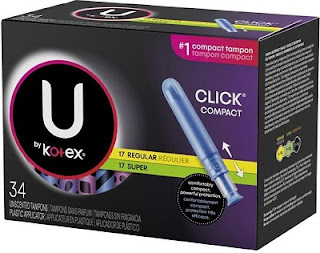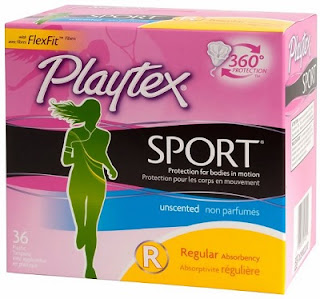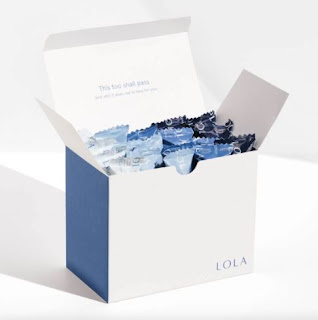Tampon
1.1 Before tampons and sanitary pads are invented
In Ancient Greece in the 10th century before feminine napkin and tampons were invented. Women use sheep’s wool, cotton, rag, rabbit fur, knitted pad to hold up their monthly cycle; Ancient Japanese women use paper cuttings from origami as menstrual pad; Hawaiians felt comfort to use local fern; African women use grass and in Indonesia, menstruating women ply vegetable fibers as a menstrual pad.
1.2 Development of tampon
The discovery of cotton made out of wood pulp during the 18th century was purposely for men not for women, when nurses in France used cotton as bandages to stop blood from war victims. It is cheaper and easy to dispose of. Manufacturers then started the first commercial use of disposable pads called the Southball pad. In the US the idea was developed by Johnson and Johnson which they called Lister’s Towel: Sanitary Towel’s for Ladies.
1.3 When were tampons
invented?
Who invented tampons?
Dr. Aveling and her Vaginal Tampon-Tube were released in 1879, where the very
first tampon was described as an applicator contraption made of a small
unsilvered glass vaginal instrument with a wooden rod. In 1931, Earl
Haas, a physician in Colorado developed the cardboard applicator tampon, the
menstrual tampon which is what women are currently using. The scheme is
from his female friend who inserted a sponge into her vagina to manage the menstrual leak, Earl then invented a disposable device to replace the menstrual
pads.
2. What is a tampon
2.1 How do tampons work
Tampons are a medical device that is regulated by FDA. It absorbs and
soaks up menstrual flow during the monthly cycle. It is a little
plug made of cotton that can be inserted and fits in the vagina. Some of
the tampons have applicators made of plastic or cardboard paper.
2.2 How do you choose your absorbency?
The tampon absorbency chart is the universal guide based on FDA absorbency
guidelines for all tampon brands. In the chart, you will find that mini
tampons should hold up to 6 grams of liquid.
3. Raw materials
3.1 What are tampons made of
Tampons are made of 100% pure cotton, 100% pure rayon, or a combination of the
two.
3.2 What chemicals are used to manufacture tampon
Some tampon manufacturers used chlorine to bleach the raw materials.
However, the bleaching process leaves a chemical break down called dioxin.
3.3 How are tampons created?
• Raw Material
100% pure cotton, or 100%pure rayon, or a combination of both fibers are fed
into the fiber mixer to lose fiber and to remove all impurities to make them
hygienic.
• Web Formation
Cleaned fibers are mixed and blended evenly to form a web depending on the tampon
absorbency.
• Tampon Formation
A nonwoven fabric cloth shaped like a tampon covers the web to form the tampon
• Attaching string
The cord or string is then attached in the middle, sewed from the top until the
end of the tampon, leaving enough length string hanging for easy pull
• Preparing Applicator
The tampon is now set to the applicator
• Packing
Each tampon is individually wrapped in either film or recyclable paper to secure product quality and to avoid bacteria
contamination.
3.4
Parts of the tampon
4. Inserting a tampon
4.1 How to put on a tampon correctly
Make sure your hands are washed clean before holding the tampon.
a. Point the top of your tampon in your vagina at 45 degrees angle
specifically towards your lower back b. Slowly insert half of the
applicator into your vagina. If you are inserting it correctly, the tampon
should go in smoothly.
c. Once you notice that your fingers hit your vulva or the opening of the
vagina, it means you have inserted the tampon applicator correctly.
d. Then push the top end of the applicator using your pointer finger to
insert the cotton part of the tampon.
If you feel uneasy when you sit or walk, the tampon might not be inserted
far enough. You need to remove it and insert a fresh and new tampon.
4.2 How to put in a tampon
You can sit on the toilet and spread your legs with knees facing apart. Suppose you prefer to stand position. Put one foot on top of the
toilet seat.
4.3 How to put a tampon in for beginners
For beginners, you can take a deep breath then relax your muscles before you
insert the applicator. This will help to put the tampon in the right position.
5. Best Tampon Brands
•Kotex Tampons
The compact size and the packaging of Kotex tampons are one
of its advantages, it is easy.
It is easy to insert for the applicator is not bulky. You will not notice
that you are even wearing it. People are just annoyed when it comes to
distinguishing which absorbency is because the color almost looks the
same. Kotex is made of Polyethylene film and Polypropylene fibers printed
with colorants
Cost per box of 40 units is $9.27 = $0.21 cents per unit
• Tampax Pearl Tampons
It contains, cotton, rayon, polyester, polypropylene, polyethylene fiber finishes. It expands like a butterfly shape when while absorbing liquid. The applicator is a bit bigger than Kotex Tampon. I would not recommend this for beginners. Their anti-leak guard string does not stop leaks.
That would be depending on the user’s super heavy flow. It can hold up to
3.4 tsp of liquid before the leak.
Cost per box of 188 units is $37.88 = $0.19 cents per unit
•
Playtex Sport Tampons
Ingredients are Rayon and/or cotton fiber, polyester or cotton string, polysorbate 20. Playtex applicator is just about the right size and the contoured grip is very convenient to use. It can hold up to 3.4 tsp of liquid.
Cost per box of 80 units -$19.55 = $0.24 cents to per unit
• Lola Tampons
100% organic cotton tampons, and that’s it, no other
ingredients added. You can only order via subscription on their
website. You can select and mix the quantity and the size you want per
box. Then choose your frequency, indicate how many boxes you want to be
delivered to you each month. that is one good thing about Lola. Their sizes are light, regular, super, and super plus. It can hold up to 3.2 tsp of
liquid.
Cost per box of 50 units -$8.50 to $10 = $0.17 cents to $0.20 cents per unit
• Seventh Generation Tampon
The plastic applicator is of plastic and is made of 95% plant-based
materials. The components are Certified
organic tampon cotton, water- repellant string wax, and cotton. The applicator does not have a grip. But it depends on how you hold the applicator. It can hold up to 3.5 tsp of liquid.
Cost per box of 16 units $6.99 = $0.17 cents to $0.44 cents
per unit
Q & A
1. Do tampons hurt?
If Tampons are inserted correctly in the vagina, you should not feel any pain
or discomfort, but if it seats low near the pelvic, that would make you feel
irritated and uncomfortable. You can correct the insertion by pulling the
tampon out and reinsert correctly, or gently push it back deeper. Remember to
wash your hands before doing so.
Removing tampons does sometimes hurt especially when it's not fully saturated
with blood. The fibers on the tampon rub in the vaginal opening which causes
your vagina to hurt. It is time to choose a lesser absorbency tampon.
2. How long can you leave a tampon in?
You need to change your tampon every 4 hours and no more than 8 hours,
depending on absorbency.
3. Can you sleep with a tampon in?
If you sleep not more than 8 hours, it is safe to sleep with the tampon
in. Or you can also change the tampon when you woke up to pee in between
your sleep. If you sleep for 9 hours straight, I would recommend you use
night pads instead of a tampon.
4. Can you swim with a tampon?
Yes, it is much safer and ideal to wear a tampon if you have a period, rather
then using a sanitary pad.
5. Do tampons get stuck inside you?
No, because the vagina where you place the tampon does not have any opening
going to the uterus, there is a cervix that serves as a barrier between your
vagina and uterus.
6. Can a tampon string break?
No, our tampon cord or string is perfectly sewn from the top until the end of
the tampon. It can carry from 2kg to 3kg of tension liquid.
7. Can you use tampons for vaginal discharge?
No, tampons are designed for the menstrual period when used in the vagina. We
highly suggest you visit your Gynecologists to examine vaginal discharge.
8. Can tampon fall out when you poop?
If the tampon is properly inserted, it will not fall out. Because the vagina is
holding it up. But for hygiene purposes, it is better to change a tampon every
time you poop.
9. Is it safe to use tampons after giving birth?
It is not recommended to use tampons after giving birth due to fresh cuts and
wounds around the vagina. You may use a sanitary pad during 1st trimester
of your post-natal period, or you may consult your OB gynecologist during a
post-natal checkup to seek advice when it is best to go back into using a
tampon.
10. Can a tampon get lost in the uterus?
No, because the vagina where you place the tampon does not have any opening
going to the uterus, there is a cervix that serves as a barrier between your
vagina and uterus.
11. What if you need to pee, do you need to change your tampon each time you
pee?
No, because tampon is placed in the vaginal hole where your menstruation is
released, while your urine or pee is released from your urethra, so there are
two different holes. It would be best if you placed the string aside so it will
not catch any urine.
12. Are tampons flushable?
Organic tampons that are made of %100 kinds of cotton can be flushed.
Tampons with polyethylene film, polypropylene, and other ingredients are not
flushable.








Comments
Post a Comment